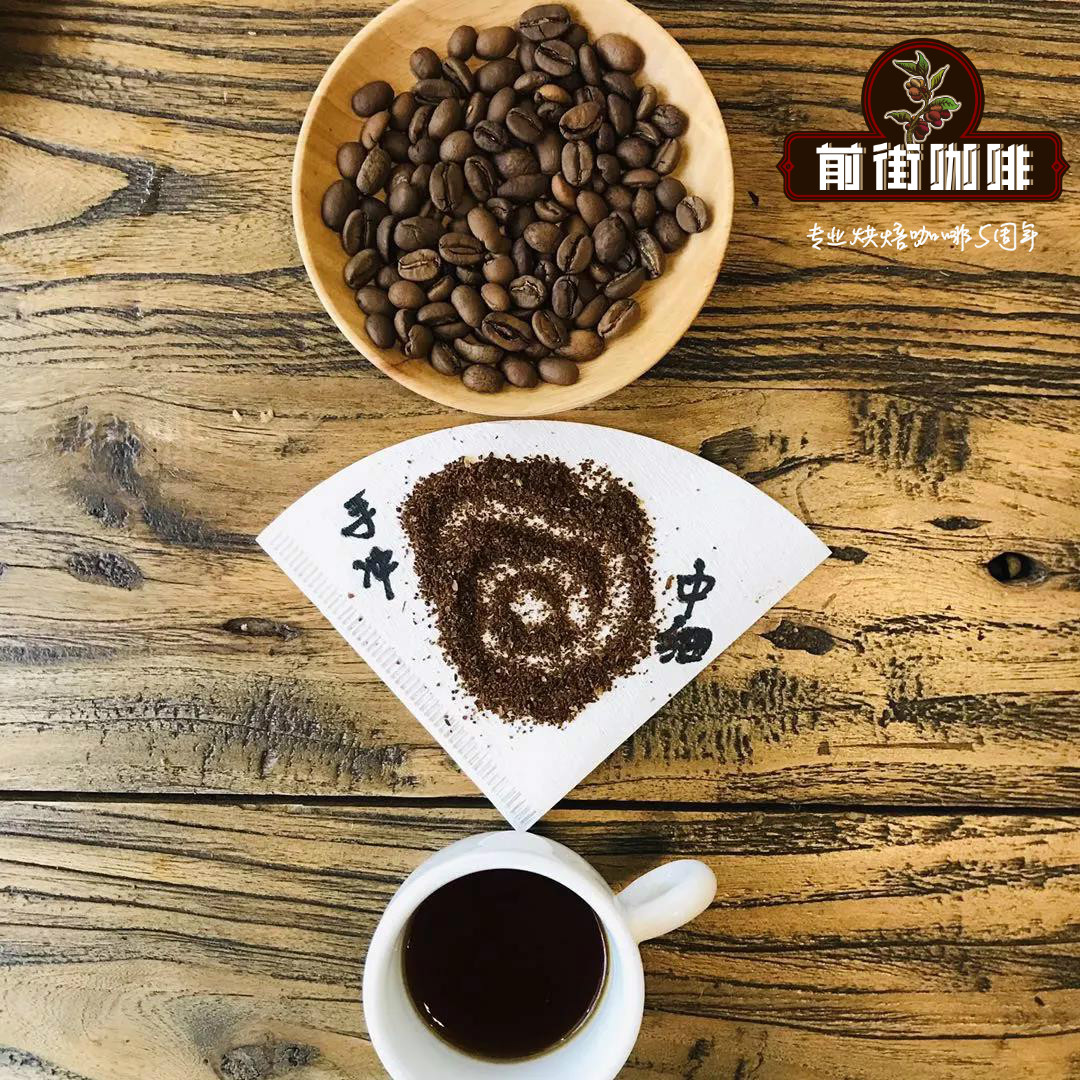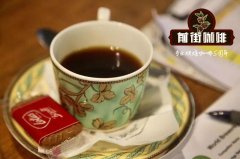Kenya Asali AA TOP exquisite 72 hours washing

Professional coffee knowledge exchange more coffee bean information please follow the coffee workshop (Wechat official account cafe_style)
There is no country in the world that attaches so much importance to producing high-quality coffee, so Ken can be regarded as the best model for coffee producers in the world, because all Coffee Coffee must be handed over to the government-established Coffee Board of Kenya, CBK (Coffee, Coffee) for unified collection and processing cup classification. Every Tuesday, the officially established Nairobi Coffee Exchange (the Nairobi Coffee Exchange) is made public in the capital. because this open system managed by the government encourages more than 570,000 small coffee shops, as long as they have good quality, they will not always get a good reputation.
In fact, there is still a lot of support for the efforts made by the government. The government provides the knowledge and technology needed to grow coffee for a large number of small coffee shops. It leads nearly 300 agricultural and agricultural cooperatives (some like the Taiwan agricultural production class) to better handle beans. The coffee bureau (CBK) is willing to devote efforts and educational guidance to the production, product research, marketing, and even financial guidance of the coffee industry. It has created the charm of Ken coffee products and incomparable taste, which is deeply loved by coffee producers from all over the world. Ken coffee is also loved in Taiwan coffee market.
The environment is located in Mount Ken (Mt. KENYA, volcano) and Mount Aiguang (Mt. Among the Elgon, the famous producing areas are Meru, Thika, Nyeri, Nakuru, Embu and so on. The terrain of Kenya is complex and changeable, with plateaus, deserts, valleys and grasslands. Coffee producing areas are spread all over the central and southwest and plateau areas with elevations of 1000 to 2500 meters above sea level, such as the Kenyan Mountains in the middle, the Aberdare Zone region in the west, Nyanza, Kasii and Bungoma in the west, and Kericho and Nakuru in the Kentucky region.
The processing method of raw beans is mainly water washing, the grading method is graded by grain size, and the actual value is determined by cup cake. The highest levels of coffee beans are AA (large beans left on 7.2mm beans), A (second largest beans left on 6.8mm beans), B (medium beans left on 6.2mm beans), C (all small beans smaller than B), PB (green beans), and TT and T beans that are too small. Grade An and B beans will be mixed for export, which is AB grade. CBK has a very high demand for coffee beans, which is packed in a consistent package, coupled with good quality and appreciation, so coffee lovers will never forget to enjoy a cup of coffee.
In order to improve the coffee industry, the Scott laboratory (Scott laboratories) in 1930 decided to start with varieties that were willing to improve the coffee industry, hoping to cultivate varieties with high yield, disease resistance, greater adaptability to weather, and suitable soil characteristics. Researchers matched traditional native bourbon, mocha, Tibica and so on to cultivate new stars like SL28 and SL34. On the palate, there are strong fruit flavors such as sour fruit, citrus and plum beyond the traditional bourbon.
The main varieties of coffee were introduced from the northern country of Yisuobi. Through the improvement of their own varieties, there are four common varieties of coffee: Bourbon, Kents, SL34, SL28, Typica and Riuri 11. At present, about 90% of coffee plants are SL34 and SL28. The new variety Batian issued in 2007 has not yet been planted in large quantities. Most of Ken coffee bars are uncertified organic growers. Due to the use of improved planting techniques, chemical farmers or herbicides are rarely used. All of Ken's high-end coffee is washed, and the low-grade products of daily bean unwashed buni are only for local use.
Ken is the star country of coffee in Africa, which is geographically close to Yisuo, but the coffee industry started much later. With the vigorous development of the fine coffee industry in the past decade, Ken has become an important country in which international coffee lovers compete. Although the overall output of coffee accounts for less than 5% of the world's total, the characteristics of phosphoric acid-rich soil, SL series of special products, and local water washing are all the reasons why Ken coffee has become famous internationally today.
Ken coffee is generally divided into several sources: the first is a very small number of large private farmers, and the second is small farmers scattered in the mountains. After the collection, post-processing and other processes, the Ken coffee company will hold a NCE auction in Nairobi, the capital, every Tuesday, and the restaurants and exporters of various countries will also order their favorite batches of coffee at this time.
Kenya is a famous coffee producing country in East Africa, and it is also an important producing area of high-quality coffee in the world. Kenya coffee has a full flavor and strong characteristics, and the coffee trade method also has a set of fine system. The classification of coffee bean size, such as AA or AB, cannot be equated with the flavor. The bidding batch of the coffee bureau is based on the cup to test the flavor. The bidding price of the fine product Kenya remains high, and the competition of raw bean merchants from various countries is very fierce. The good reputation of Kenyan coffee comes from the technical research and development of academic units, careful education of farmers' knowledge related to coffee planting, and farmers' meticulous quality control; while the microclimate and fertile soil suitable for coffee growth, the high hardness of coffee beans and the traditional 72-hour long Kenyan washing method are all the reasons for the bright and sour characteristics of Kenyan coffee.
"Asali" means "honey" in Swahili (the official languages of Kenya are English and Swahili). The Honey processing Plant (The Asali Cooperative) is located in the Great Rift Valley Sika region in the Aberdare Mountains of Kenya, connected to Ethiopia to the east. Honey processing plant is a washing plant composed of 155 small coffee farmers. Coffee cherries come from neighboring small coffee farmers. On Mount Kenya (MT. KENYA) and MT. Among Elgon, the more famous producing areas are Meru, Thika, Nyeri, Nakuru, Embu and so on.
The raw bean treatment method of honey treatment plant is mainly water washing, grading according to the size of beans, and finally cup test to determine its actual value. The highest grade coffee beans are AA (the beans left on the 7.2mm sieve), followed by A (the next largest coffee beans left on the 6.8mm sieve), B (medium coffee beans left on the 6.2mm sieve), C (all small beans smaller than B), PB (oval granulated beans), and finally, too light, too small TT and T beans. Generally speaking, grade An and B beans will be mixed for export, which is the AB grade that we often hear in the market.
The Kenyan authorities (CBK) have very high requirements for coffee beans, not only of good quality and quality, but also of consistent packaging, no wonder coffee lovers never forget to try a cup of Kenyan coffee.
The coffee producing areas in Kenya are mainly concentrated in the plateau areas represented by Mount Mt.Kenya. Tropical climate, acid red volcanic soil provides a natural and suitable growth environment for coffee. It is most famous for seven major producing areas, including Neri, Sika, Chiambu, Geliniya, Ruiru, Mulanga and the western side of Mount Kenya, with the main producing areas such as Nyeri and Ruiru in the middle.
SL-28 and SL-34 are the two most respected varieties produced by the Scott laboratory in Kenya in the 1930s. The Scott Laboratory no longer exists, but it is now the National Agricultural Laboratory and part of the Kenyan Agricultural and Animal Husbandry Research Organization. Both varieties are derived from bourbon.
Although it comes from a different pedigree: SL-28 was developed from drought-resistant varieties originally grown in Tanganyika, which is part of modern Tanzania; it is generally considered to be of the highest quality, but its yield is low compared to other commercial Arabica varieties. SL-34 is a variety originally found near Kabete and performs well at low elevations. Both SL variants showed bronze tender leaves.
Kenyan water washing is a cyclic repeated treatment after fermentation. On the day of harvest, the best quality coffee cherries are selected, peeled and fermented. The fermentation time is 24 hours, and then washed with clean river water after 24 hours. Then, it is fermented again with clean river water for 24 hours, and then washed, so it is repeated 3 times for 72 hours, so it is called Kenyan 72-hour fermentation water washing treatment, referred to as K72. This treatment allows coffee beans to ferment for a long time at low temperature, so that beans can have a brighter, cleaner but full flavor!
This full-bodied Kenyan coffee, due to its high altitude and hard beans, climbed at a higher temperature at first, turned yellow in about 5 minutes, then reduced its firepower into the Mena reaction, and then decreased its firepower again to lengthen the Mena reaction time at 178C.
When the first burst begins, it is highly endothermic, so it is recommended to maintain heat at this stage to prevent stagnation. The development of first explosion takes more time, which is helpful to reduce acidity and develop flavor.
The furnace temperature is preheated to 200 degrees into the pot, the throttle is opened at 3J30s, fire is fired, the firepower is adjusted to 160, the throttle is unchanged, the temperature return point is 1`34``, keep the firepower, 5`30` turns yellow, the smell of grass disappears, enters the dehydration stage, the firepower is reduced to 130, the throttle is opened to 3.5.
7`45 dehydration finished, firepower dropped to 80, 8`30 is the bean table wrinkled and black markings, toast flavor into coffee, as a prelude to an explosion, then pay attention to the sound of an explosion. When it starts to explode at 8`52`, the throttle is fully open for 5, and the firepower is reduced to 50, reducing the degree of caramelization. After an explosion, the development time is 2 minutes and 10 seconds, to 191.6 degrees.
This is a classic Kenyan AA coffee with wet aromas of ripe tomatoes and flowers, imported virgin fruit and black plum flavors, bright acidity, clean palate, medium body, outstanding sweetness in the middle, juicy, raspberry and yellow sugar on the finish, and [green tea] aromas.
Important Notice :
前街咖啡 FrontStreet Coffee has moved to new addredd:
FrontStreet Coffee Address: 315,Donghua East Road,GuangZhou
Tel:020 38364473
- Prev

A bean with a strong smell of red wine-the Costa Rican sun
Professional coffee knowledge exchange more coffee bean information Please pay attention to Coffee Workshop (Wechat official account cafe_style) Coffee industry in Costa Rica began to develop since the middle of the 18th century, is the first country where coffee was introduced to Central America to grow, with a long history, therefore, the coffee organization is fully equipped from production to marketing system. Costa Rican coffee has always been popular in terms of quality and quantity.
- Next

90+ does not mean that all coffee candles rated above 90 have flavor characteristics?
Professional coffee knowledge exchange More coffee bean information Please pay attention to Coffee Workshop (Weixin Official Accounts cafe_style) Ninety + Candle Light Name Origin: Drima Zede (Candle Light, the name of this Yejia Xuefei) means Best Approach in local dialect. According to the information provided by the original factory, this Yejia Xuefei is a customized product line developed based on 90+ years of experience.
Related
- Detailed explanation of Jadeite planting Land in Panamanian Jadeite Manor introduction to the grading system of Jadeite competitive bidding, Red bid, Green bid and Rose Summer
- Story of Coffee planting in Brenka region of Costa Rica Stonehenge Manor anaerobic heavy honey treatment of flavor mouth
- What's on the barrel of Blue Mountain Coffee beans?
- Can American coffee also pull flowers? How to use hot American style to pull out a good-looking pattern?
- Can you make a cold extract with coffee beans? What is the right proportion for cold-extracted coffee formula?
- Indonesian PWN Gold Mandrine Coffee Origin Features Flavor How to Chong? Mandolin coffee is American.
- A brief introduction to the flavor characteristics of Brazilian yellow bourbon coffee beans
- What is the effect of different water quality on the flavor of cold-extracted coffee? What kind of water is best for brewing coffee?
- Why do you think of Rose Summer whenever you mention Panamanian coffee?
- Introduction to the characteristics of authentic blue mountain coffee bean producing areas? What is the CIB Coffee Authority in Jamaica?

